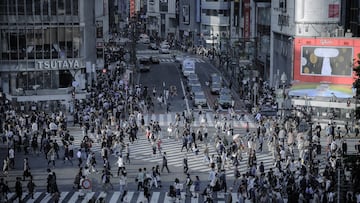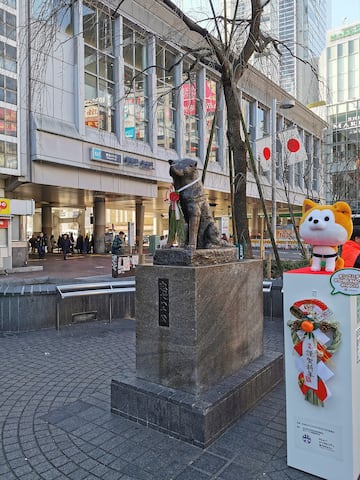URBAN LIVING
This is the Shibuya crossing in Japan: more than 2 million people pass through every day
First opening its doors in 1885, the Shibuya station has undergone remarkable transformations, with the most significant being in 1932. The statue of Hachiko ‘guards’ the station.

Around one year ago, the Earth hit a new population milestone: the number of people on our planet passed the eight billion mark, with the number of humans continuing to grow at a rate of 80 million per year. Leading the list of countries with the highest population are two behemoths: India and China, each with over 1.4 billion inhabitants. The difference between them is only a few million, but the comparison to the rest is staggering.
The United States, third in the ranking, has ‘only’ 335 million inhabitants. Meanwhile, with just a third of the USA’s population (124.3 million) and just outside the top 10 in 11th place, lies Japan.
While the land of the rising sun may not be among the most highly populated countries it does hold one particular population record. According to a report by UN-Habitat, the country has the world’s most densely populated city, Tokyo, where over 37 million people walk the streets every day.
The Shibuya Crossing
Amidst the urban jungle of Tokyo lies an international symbol of organised chaos: the Shibuya Crossing. Here, streams of humanity converge, with total daily counts of more than two million souls moving from one side to the other. The intersection is a spectacle, especially during rush hours, with up to 2,500 individuals navigating its expanse every two minutes.
Often referred to as the ‘scramble’, this crossroads is emblematic of Tokyo’s ceaseless energy. Tourists and locals alike are inevitably drawn to its allure, enticed not only by the crossing but also by the surrounding plethora of shops, restaurants, and vibrant entertainment locales.
The history behind Shibuya
Adjacent to the famed crossing is its eponymous station, inaugurated in 1885. Today, it sees a daily influx of between two and three million commuters. However, it wasn’t until 1932, with the launch of the Tokyo Toyoko line, that Shibuya Station transitioned into the pivotal nexus linking Tokyo’s heart with the bustling port city of Yokohama.
This infrastructural evolution expanded the station’s reach, accommodating a burgeoning Tokyo workforce. Presently, it’s an indispensable transit point, accommodating nine principal train routes and an extensive bus network, while also hosting myriad shopping and business centres.
The legend of loyal Hachiko
Upon exiting the station, one is immediately greeted by the poignant statue of Hachiko, a little dog. This bronze tribute, symbolising loyalty and perseverance, two qualities highly valued by Japanese society.

Hachiko’s tale is one of undying loyalty. Every morning he accompanied his owner, Professor Eizaburo Ueno of the University of Tokyo, to the station and would be waiting at the station to greet him in the afternoon. Tragically, in 1925, Ueno didn’t return, having unexpectedly passed away from a haemorrhage.
Hachiko was then adopted by another family, but he never forgot his owner: every morning and every evening, for almost ten years, he would wait for his master.





